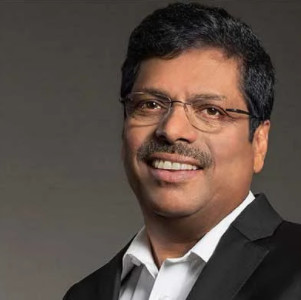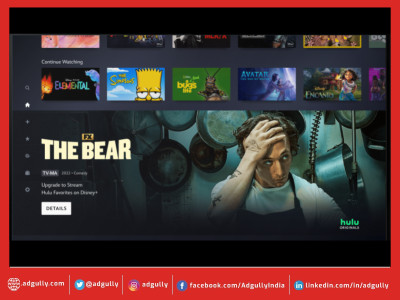"We need light-touch regulation" says K Madhavan
The 9th edition of the CII Big Picture Summit commenced virtually on 16th and 17th December. K Madhavan, Chairman, CII National Committee on Media & Entertainment and Managing Director, Star & Disney India, gave an inaugural address where summed up the difficult year for the M&E industry in 2020 and how the industry is striving to recover to its pre-COVID-19 levels and get back on track to growth.
Read more :- M&E can grow from the present $24 bn to $100 bn by 2030: K Madhavan
For the closing ceremony, Madhavan spoke about the potential of growth in the M&E sector, changes in the film industry, the importance of print and experimenting with technology and content.
The following was his address :-
"Good afternoon, and welcome to the closing ceremony of the exciting Big Picture Summit. This 9th edition, held virtually over the last three days, has seen a great number of exciting discussions, from leaders in the industry, policy-makers, and knowledge experts.
This summit’s theme – Big to Bigger – highlights the possibilities of the Media and Entertainment industry which is currently only about 1% of the country’s GDP. As I mentioned earlier, the industry has the potential to grow from $24 Bn to 100 Billion by 2030, which is what our vision is and our target should be. The potential of the media industry is untapped and humongous.
We are in the business of entertaining viewers, our audiences. The audience demand for entertainment has never been changed – is only going up. But only the mode of distribution has changed. The Television penetration in this country is only 70% - i.e. we have 300 Mn households and even today barely 200 million households are connected to TV. That is another positive thing for the industry, 1/3rd of the market is still away from the television. Television and streaming ARPUs in India remain much lower compared to developed markets. Out of 1.2 Bn mobile phones, only half of them are smartphones – i.e. 600 Million. Mobile phones act today as personal screens and play a major role in content consumption. The number of screens has gone up dramatically from 200 mn to 600 Mn screens, and it is growing.
On the film industry – it was passing through a critical phase. It suffered in theatrical revenue in 2020, but they grew in digital and non-linear space, which is expected to grow at ~30% CAGR in the coming two years. The film industry has to take full advantage of new forms of distribution, to expand to new markets. For example, Hollywood has been earning almost 50% of its theatrical revenues from outside the United States. Whereas In India, it is just 10-12%. Our content must be created with a global appeal for global audiences and distributed around the world.
The Print sector still accounts for nearly 20,000 Cr rupees of advertisements, as part of its overall 30,000 Cr of revenue. In the last few years, growth in Print has come from the Regional markets, where the focus is on local and hyper-local news. Across the world, reputed publishers in the print space have expanded their operations to podcasts, online apps, and other extensions – all run on a subscription model. In India, there has recently been a rise in subscription-only journalism, especially online.
Technology is no longer just an enabler for delivering content, but it can play an essential role in the content itself. Artificial intelligence can take the consumer experience to the next level – whether in gaming or simply in personalized recommendations for what consumers should watch. Interactive games could be the future of education – especially now that most children are learning from home.
Animation and Visual Effects are also at an inflection point. India has less than 10% of the global market share in VFX and Animation, despite costs being almost 1/5th of developed markets. An effort in creating a skilled production base and offering incentives will help India capture a larger share of the growing global market.
The most important point, which I mentioned in our opening remarks, is that we need light-touch regulation. The industry needs to be able to experiment with content and technology, needs to be able to invest in growth – for which you need huge support of capital. The regulatory framework has to be supportive to grow the sector. We hope that through continued discussion and collaboration with the policymakers, we will be able to fully implement the principles of ‘Ease of Doing Business’


















Share
Facebook
YouTube
Tweet
Twitter
LinkedIn